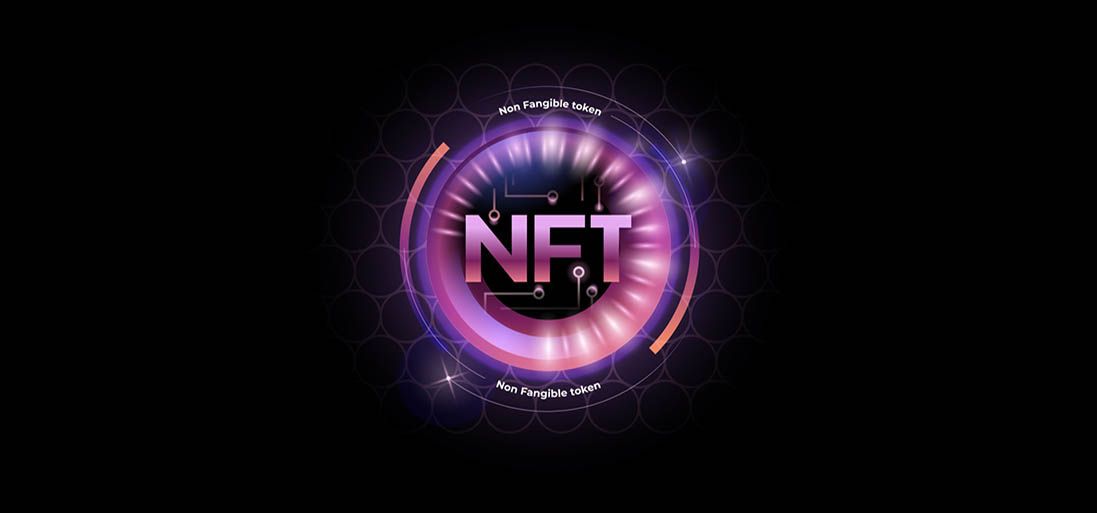NFTs have caused a huge buzz in the crypto industry in 2021. Experts and ordinary users argue about how long the NFT hype will last. It is important to pay attention not only to the benefits of non-fungible tokens but also to the problems and risks associated with them. NFTs have found their way into various fields, whether it be music, digital art or the gaming industry. Despite their wide potential, usefulness and prospects, one should not forget about the other side of the coin. No wonder many experts agree NFTs are an enormous bubble that is about to collapse.
We should take into account the negative aspects of the industry, which every year are felt more and more acutely and hinder the development of the sphere. We asked experts what the major problems of the NFT industry can be identified and what exactly gives rise to skepticism, constant criticism and distrust of non-fungible tokens.
Danatar Atajanov, Brand Manager of the OXLY.IO crypto platform, notes that now by NFT primarily a speculative investment tool is meant, and not the technology itself. Based on this, we can identify some negative aspects of NFTs:
- The availability of technology has led to the flooding of the market by NFTs devoid of any value.
- Like any financial instrument, NFT requires knowledge for successful investments, and not everyone has this knowledge.
- There are many scam projects with well-developed marketing.
- Speculation leads to a slowdown in trading and an increase in sales at a loss.
- There is a gradual decline in public confidence and interest in this type of digital assets as highly unreliable.
Let's consider all these problems.
Regulatory Issues for NFTs
Since the NFT market is still in its infancy, the legal and regulatory framework on this subject is constantly evolving. Although most countries do not yet have laws or regulations specifically addressing non-fungible tokens, certain restrictions apply to this asset class. Intellectual property, privacy, and anti-money laundering (AML) issues are acute. Experts agree that one of the major problems of NFTs is vague legal concepts and the lack of clear regulation.
Alexey Stepanov, website developer, entrepreneur and expert on NFT collections, says,
“The key problem I see is copyright infringement and regulating the transfer of rights to objects. Now the user receives only a digital copy and the rights to it, the rights of the author are not transferred and it remains to be hoped that an NFT object is purchased from a bona fide author. I don’t even want to talk about stealing objects and creating fake copies. Of course, these are problems. It's good that industry leaders are aware of these issues. The OpenSea marketplace has introduced many innovations and is actively working to squeeze out scammers with their endless number of fakes on their website.”
Artem Kopaleishvili, Founder of NFTPricer.art, agrees that one problem in the NFT sphere is the lack of a legal framework that clearly regulates the position of the cryptocurrency. The expert notes that people do not understand whether it is forbidden or not, hence there is a lot of rejection. The thing is that the transition to the blockchain and the development of various services and technologies consume a lot of time and cost a lot.
Dmitry Chigirin, Creative Director and Co-Founder of the Sol creative agency, believes that the fundamental problem of NFT is legal. Besides the need for legislative regulation, there are questions about the technology itself.
The expert adds,
“For instance, the founder of the Signal messenger Moxie Marlinspike in experiments showed that NFT is a record in the blockchain, to which only a link to the media file is attached. When you own an NFT, you own the link, not the file. This aspect, of course, gives rise to mistrust.”
Questionable value of non-fungible tokens
The cost of NFTs is very volatile as it depends on several factors. Initially, it is influenced by the status of the seller, rarity, exclusivity, practical significance, hype, etc. It is very difficult for collectors to determine the real value of an NFT at the time of purchase or to predict the price increase in the long term if a non-fungible token is purchased as an investment. Another problem with NFTs is that their value can rise or fall unpredictably.
Dmitry Noskov, an expert at the StormGain crypto exchange, considers the real problem of NFTs to be too many such tokens whose quality is not confirmed. They can be made and sold by any user, and they are often not based on any valuable asset. This is a very hype story, which, as practice shows, may end quickly. Therefore, serious investors look at the NFT market with certain skepticism.
Milena Bykova, Development Director of the Fintech Start Association, NFT Project Manager, explains the reasons for the skepticism and distrust of NFTs by analysts and experts with the fact that such unique digital assets as NFTs and their purchase is a serious investment that should be estimated and the criteria for their value are necessary. These are not just 101 purchased pictures of cats with different background and characteristics, but rather a digital certificate of authenticity for paintings and other art.
The expert adds,
“Each NFT must be exclusive and give rights to certain assets. If the tokens are applied like this, not only the confidence of analysts will increase, but there will also be quite a strong interest from the market, which will attract additional investments to NFTs.”
Kristina Vinogradova, Editor-in-Chief of NFT-ARTY, notes that the NFT industry knowingly generates a lot of doubts and distrust among the public. The expert identifies three main reasons for this:
- Subjective value. Why does one picture of a monkey sell for thousands of dollars and another has no value at all? You can talk for a long time about how important the developed community around the NFT collection is for it to be expensive. But you can not deny the share of subjectivity. For one person it is valuable, for another it is not. This is not how it works with cryptocurrencies. If you have 1 BTC and Ron also has 1 BTC and you decide to convert your bitcoins to fiat at the same time, you can do so. And you will receive exactly the same amount. But if you have an NFT from a certain collection and Ron also has an NFT from this collection, the price of these NFTs is very likely to be different. Although outwardly they may be barely distinguishable.
- Lack of benefit. The vast majority of NFTs are of no use. This is just a picture that belongs to you according to a certificate obtained with a blockchain smart contract. Is this enough to make people need such NFTs for a long time? If the NFT bubble does burst, there will certainly be some projects left on the market. And these are not only major players who have rallied the support of thousands of people. These are also beneficial projects. For example, NFT gives access to a closed training club. The owner of such a token has a lifetime subscription to study something, as well as community support and the opportunity to meet like-minded people. Or another example is when NFT allows you to receive passive income through staking or performing any of the usual activities like walking, reading, watching videos, etc.
- There are no long-term prospects. Many NFT projects do not have any plans for the future. The collection is released. What's next? Silence. It is difficult for such collections to stay in the market for a long time. But you need not only to hold on but also to develop and to interest holders constantly. Unfortunately, many creators are impatient to get their project off the ground and simply miss out on long-term analysis. Going with the flow is not the best strategy. Especially now, when the NFT market has quietened down a bit and is waiting for really worthwhile projects.
Venera Shaidullina, Professor of Financial University under the Government of the Russian Federation, emphasizes the irrationality of NFTs:
“Quite logically, it makes no sense to pay money, say, for a digital image of a painting, if you can see it anyway by entering a corresponding request on the Internet. NFT can be easily copied and relaunched under a new code. Basically, users don't see the point in paying money for a digital image in the internet age. You can always make a copy and enjoy it. Any copyright issue? No, we haven't.
“Some users, however, hope that soon there will be mechanisms that will make viewings of original things paid so that copies cannot be made. But who in their right mind would pay to see pictures? That's right, almost no one. It is trite, irrational and unprofitable.”
According to the expert, the only place where NFT technology can be applied soundly is in legal transactions, and only in the future, when the state system is ready for this. For example, instead of exhausting transactions through the State Registers, Russian State Registration Service (Rosreestr) and other branches of hell, create an NFT token which will confirm the owner's right to an apartment. But the world is not yet ready for it.
Dmitry Kudinov, Operations Manager of EMCD, the largest mining pool in Eastern Europe, specialist in mining digital assets, notes that NFT causes criticism and distrust from the majority for one simple reason. People do not understand how you can give vast sums of money for something that cannot be touched. Owning a digital original of art or another artifact does not inspire confidence. When you buy a Picasso original and hang it on the wall, everything is as transparent as possible because here is the painting, and here is the fiat money you paid for it. As to NFTs, you own a record on the blockchain, which was paid for with cryptocurrency. The NFT phenomenon is closest to gamers, where they spend billions on virtual purchases. The generation of kids that will be older in 10 years will accept NFTs, bu digital land and own virtual assets much easier than those who were born 30-40 years ago.
The expert emphasizes that the problem of the NFT industry is that a person must understand it, and all the mistakes and wrong decisions will be seen in his wallet. If you bought a fake, no one will return your money; if you invested in a collection that the creators abandoned and it depreciated, you are the only responsible for the losses.
Misunderstanding of NFT technology by users
Another problem of NFTs is people's misunderstanding of the technology itself. The society has not yet really understood what a cryptocurrency is, and not everyone understands the intricacies of certain classes of digital assets. People still think that non-fungible tokens are just pictures that cost a lot of money for some inexplicable reasons, but do not really represent anything. This opinion creates a skeptical attitude towards the industry.
Artem Kopaleishvili, Founder of NFTPricer.art, believes that the lack of understanding of the technology itself, the lack of training materials and the lack of useful services are the biggest problems.
He says,
“I discovered an idea lying on the surface. This is the development of an analytics service for NFT. Our team has been developing it for about six months, and, having overcome some difficulties, we launched on May 21.
NFTPricer.art is NFT portfolio analytics. The service automatically takes the NFT purchase price, automatically takes the floor for the collection and calculates the profit for the entire time. Oddly enough, for 90% of users, this is the most necessary functionality that facilitates and simplifies the daily tracking of the user's NFT portfolio. Currently, the service works only on the Ethereum network\. In the next 2–3 months, it will significantly expand the collected metrics and add SOLANA, Polygon and BNB networks. Ultimately, we will bring all NFT portfolio analytics offline—to pictures and photo frames.”
Vladislav Akeliev, Director for Development of the ECOS cryptocurrency investment platform, notes that distrust breeds a misunderstanding of a new direction in art. This is a problem not only for NFT, but for all the contemporary and digital art. People do not understand how a “picture” on a computer can cost so much money, particularly if it can just be copied with two clicks. In fact, physical works are copied in such a way that their authenticity can only be determined with the help of special tools. Unfortunately, people rarely delve so deeply into the art industry and it is incomprehensible to them.
Vladimir Gorgadze, head of the Blockchain Master's program at MIPT, Co-Founder of the Atomyze tokenization program and Newity IT company, agrees that, as with other digital assets, the main problem of NFT is a lack of understanding of the tool and methods of work with it by investors and the business community. The latter should have released such tools.
If the issuer (the one who issues the token) does not determine what the value of the NFT token is, what problem it solves, what the life cycle of the token will be, who will benefit from paying for this token, then the instrument will not work by itself. Of course, we are talking about long-term business projects, not about hype or onetime projects and / or financial pyramids. Of course, the technical complexity of operations with crypto wallets for the technically unprepared (usually older) generation aggravates the situation.
Yulia Nevzorova, head of the Legal Department of the Method agency, shares her opinion on this matter, saying,
“I think that misunderstanding of what NFT is all about breeds skepticism. So, with the help of NFT, you can secure your right to create and transfer the right of ownership and use to the intellectual property object you created. It is possible to trace the entire chain of owners of NFT objects.
“Let's use an example to explain the benefits of NFT. For example, I painted a picture. From the moment of its creation, the copyright belongs to me. I am the owner of this picture. But I want this picture not only to please me at home, I want to sell it. If I do not sell it, say, at an exhibition, then I can qualify for a few buyers. But if I sell it through the digital space, then the number of potential buyers will increase. If my painting is really of artistic value, then the amount for which I can sell it will also increase. In fact, in order for me to sell it in the digital space, I can put it up for auction (which is expensive), do some actions (to digitize the picture into a token, which is an individual token of the work) and sell the NFT token through a platform. The most interesting thing is that thus I can sell both a physical picture and a metaphysical picture or certain rights to it.
“As a legal expert in IT, only one thing causes my doubts, and that is the confirmation of the authorship of the creation, as well as the number of platforms where tokens of these objects can be stored.”
Inaccessibility of NFT to a wide audience
Dmitry Chigirin, Creative Director and Co-Founder of the SOL creative agency, believes that one barrier that hinders the spread of NFT among a wide audience is the difficulty of acquiring (you need to go through several steps). The TON network and such NFT marketplaces as Disintar will gain popularity in Russia, which simplify buying NFT for a Russian user down to two steps: buying TON in a telegram bot with a card for rubles and then buying NFT. Simplification of the purchase process and the organization of an operational support service will lead to increased confidence in the NFT as a tool.
NFT and Fraud
The NFT realm is a scammer's paradise. There are fake NFT works by well-known artists, one-day websites posing as stores and stealing customer payment information, as well as people selling non-fungible tokens that already belong to someone. And this is just the tip of the iceberg. A huge number of fraudulent schemes are associated with NFT, including money laundering. According to experts, this is the key problem of the sphere.
Anti Danilevsky, CEO and Founder of Kick Ecosystem, says,
“The major problems of the NFT industry are a lot of garbage and a lot of useless solutions. Unfortunately, there is also the practice of money laundering with the help of NFTs, a manifestation of fraud, as was the case with ICOs.”
Alexander Belenov, head of the blockchain laboratory of the Idea Research Center, notes the following problems in the NFT sphere:
“These are trite solutions, and also use for money laundering purposes. In my opinion, everything else is a matter of whimsical taste.”
Analyst Aziz Kenzhaev agrees that the problem of fraud in the field is very acute, saying,
“The main problem of NFT, as in the days of dot-com and ICO, is the creation of scam projects and pyramid schemes. Constant criticism is accounted for by the fact that when such projects appear, mostly newcomers invest in them, who go broke on this, and, as often happens, leave the world of cryptocurrencies and blockchain.”
Oleg Fakeev, Founder of the Whales of Investment Telegram channel, also believes that fraud can be safely called the main problem of the NFT market. Hundreds of scam collections appear in the market every day. These are not necessarily copies of other famous collections or tools for stealing money. The thing is that there are many developers who act dishonestly with their product. They abandon the project immediately after the initial sale and withdraw money. This is natural: the more really excellent collections, the more unscrupulous sellers who want to make a quick buck on it.








